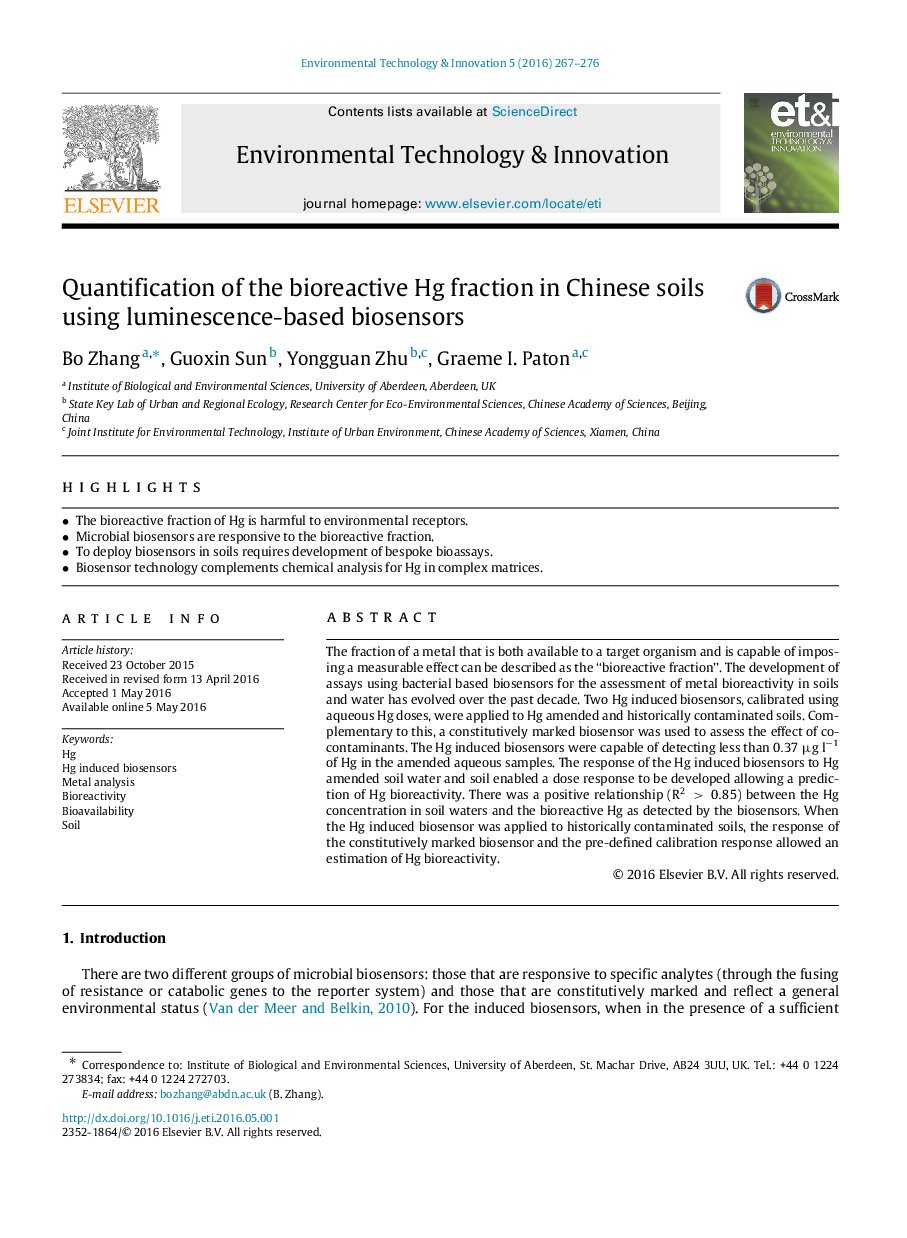| Article ID | Journal | Published Year | Pages | File Type |
|---|---|---|---|---|
| 4428212 | Environmental Technology & Innovation | 2016 | 10 Pages |
•The bioreactive fraction of Hg is harmful to environmental receptors.•Microbial biosensors are responsive to the bioreactive fraction.•To deploy biosensors in soils requires development of bespoke bioassays.•Biosensor technology complements chemical analysis for Hg in complex matrices.
The fraction of a metal that is both available to a target organism and is capable of imposing a measurable effect can be described as the “bioreactive fraction”. The development of assays using bacterial based biosensors for the assessment of metal bioreactivity in soils and water has evolved over the past decade. Two Hg induced biosensors, calibrated using aqueous Hg doses, were applied to Hg amended and historically contaminated soils. Complementary to this, a constitutively marked biosensor was used to assess the effect of co-contaminants. The Hg induced biosensors were capable of detecting less than 0.37 μg l−1 of Hg in the amended aqueous samples. The response of the Hg induced biosensors to Hg amended soil water and soil enabled a dose response to be developed allowing a prediction of Hg bioreactivity. There was a positive relationship (R2>0.85) between the Hg concentration in soil waters and the bioreactive Hg as detected by the biosensors. When the Hg induced biosensor was applied to historically contaminated soils, the response of the constitutively marked biosensor and the pre-defined calibration response allowed an estimation of Hg bioreactivity.
